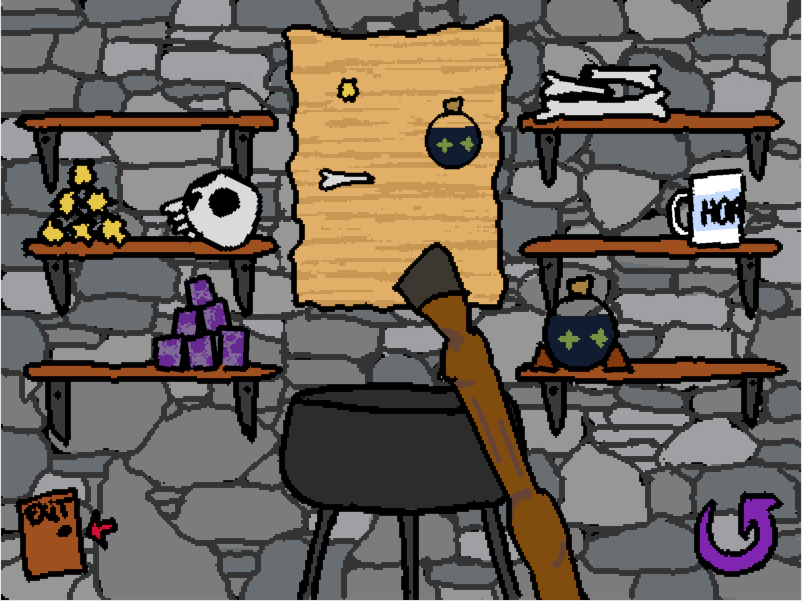Ludum Dare 49: Chevalchemy: A Hoof of Concept
Once again, I spent my weekend making a game for the bi-annual Ludum Dare game jam. The theme for this jam was “Unstable”, so of course I went for horse puns. In the game, you play as a horse alchemist (a “Chevalchemist”) working for the great Neighcolas Flamel. Your task is to mix together ingredients into increasingly complex recipes.

It’s essentially a physics sandbox, in which the fun stems from how awful the controls are. It’s silly and stupid, and I’m extremely happy with how it turned out 😊
The game can be played over on itch.io. Being a jam game, it cruelly lacks polish, but it’s totally playable. I recommend reading the (short) instructions below the game before starting. Or don’t, I won’t tell you how to live your life.
Source code can be found on GitHub.
Making Of
As always with these “-athon” sorts of projects, it was an intense and stressful, but ultimately rewarding experience. Thanks to my new time tracker, I know that I spent just under 23 hours working on the game over the weekend, which is, uhh, a lot. Also, shout out to Mandooks who helped me brainstorm this idea, and who came up with great stuff that I didn’t have time to implement.
Continuing what seems to be a tradition now, I used different tools from last time, choosing the Bevy Rust game engine with Rapier for the physics. The experience was overall pleasant, although you can definitely feel the rough edges in these two projects. In particular, I kept running into bugs and obscure things with Rapier, which greatly slowed me down. Faced with broken collisions on Sunday morning, I almost gave up, until I managed to figure out a hack.
In the past I’ve almost always made games with “code-oriented” frameworks, and my experience with Godot in April was a big realization of how great visual tools can be for game-making (yeah no shit). While it’s in the plans, Bevy currently lacks any tooling of the sort, so I ended up baking very primitive tools to help me place entities in a level and trace the collision contour of items. It works, but they’re far from the direct feedback and convenience of proper game editors.
Porting to the Web
I developed the game without thinking about WASM support at all, but
when I was done, I found myself regretting that the game could not be
played in the browser. Bevy has a great cheat book with a section on how to
compile to WASM, using a drop-in replacement for the rendering pipeline.
Everything worked mostly as expected, but for some reason I could not
control the size of the canvas element.
After some internet digging, I found a game that managed to fix this issue, “Some Tank Game” by Søren Alsbjerg Hørup. Essentially, they have a custom ECS system that checks the window size and adapts it if it’s wrong. Their system is a bit more complex than what I ended up going for, as it also handles adapting the canvas size when the user resizes the window. Big thanks to them, without this I wouldn’t have been able to port the game to WASM ❤️
Future Plans
This turned out to be one of my favourite Ludum Dare projects, and I’m considering expanding it a little, to make it into a proper game. Some ideas I have for improvements are:
- The obvious stuff: a main menu, instructions, transitions between the levels, an end screen, polished graphics, etc.
- More items, especially with interesting properties like the rack with the test tubes.
- More and better levels.
- Music and sound effects.
- More static/dynamic objects in the background. For example, I was thinking of adding a lamp hanging from the ceiling, which items can hit and bounce off. Just to annoy the player even more.
- Maybe different environments, with different layouts and specific items.
Feedback and ideas are welcome! Don’t hesitate to get in touch.